Yes, grooming plays a critical role in preventing matting in long-haired dog breeds. Regular brushing, bathing, and coat maintenance not only keep your dog comfortable and healthy but also stop painful tangles before they form.
Why Matting Is a Serious Problem for Long-Haired Dogs
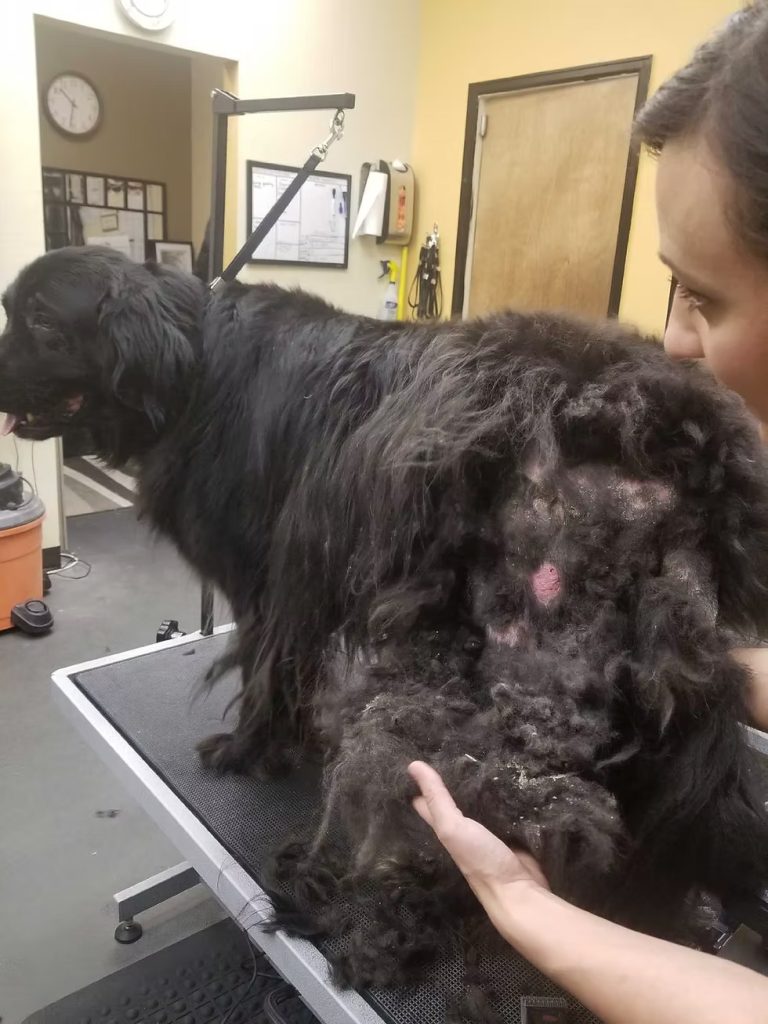
Matting isn’t just a cosmetic issue—it can have serious consequences for your dog’s comfort, health, and emotional well-being.
- Matted fur pulls on the skin, causing pain and restricting movement.
- Tight knots trap moisture, creating a breeding ground for infections, parasites, and hot spots.
- Severe mats can hide wounds, ticks, fleas, and skin conditions, making them go unnoticed for too long.
- Dogs with chronic matting often experience anxiety from constant discomfort or from grooming procedures required to remove mats.
Neglecting mats isn’t just inconvenient—it’s dangerous. Grooming, when done consistently and correctly, is the first line of defense.
What Causes Matting in Long-Haired Dog Breeds?
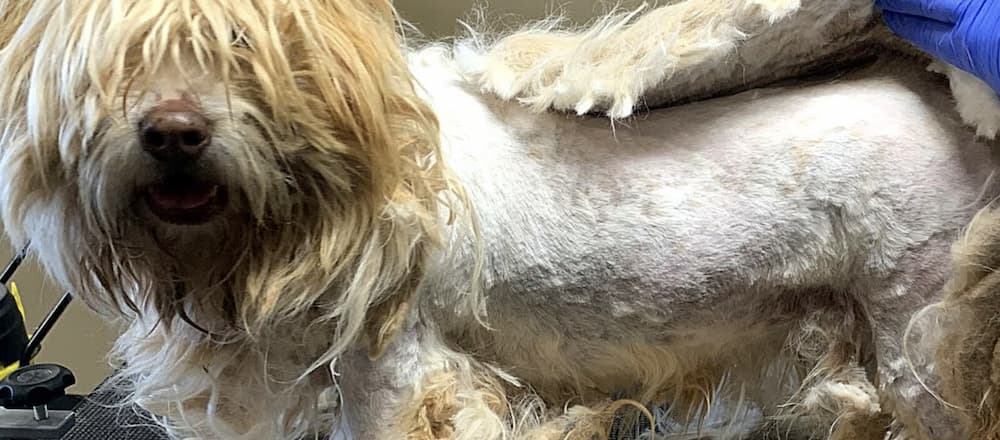
Understanding the triggers helps prevent them before they become a problem.
Common causes of matting include:
- Undercoat shedding – loose fur becomes trapped in the topcoat.
- Friction zones – behind ears, under collars, armpits, tail area, and inner thighs.
- Moisture exposure – swimming or being caught in the rain without thorough drying.
- Lack of brushing – especially during seasonal coat changes.
- Breed-specific coat characteristics – fine, curly, or double coats are more mat-prone.
Even small knots can turn into full mats in 24–48 hours if not addressed.
How Regular Grooming Prevents Matting
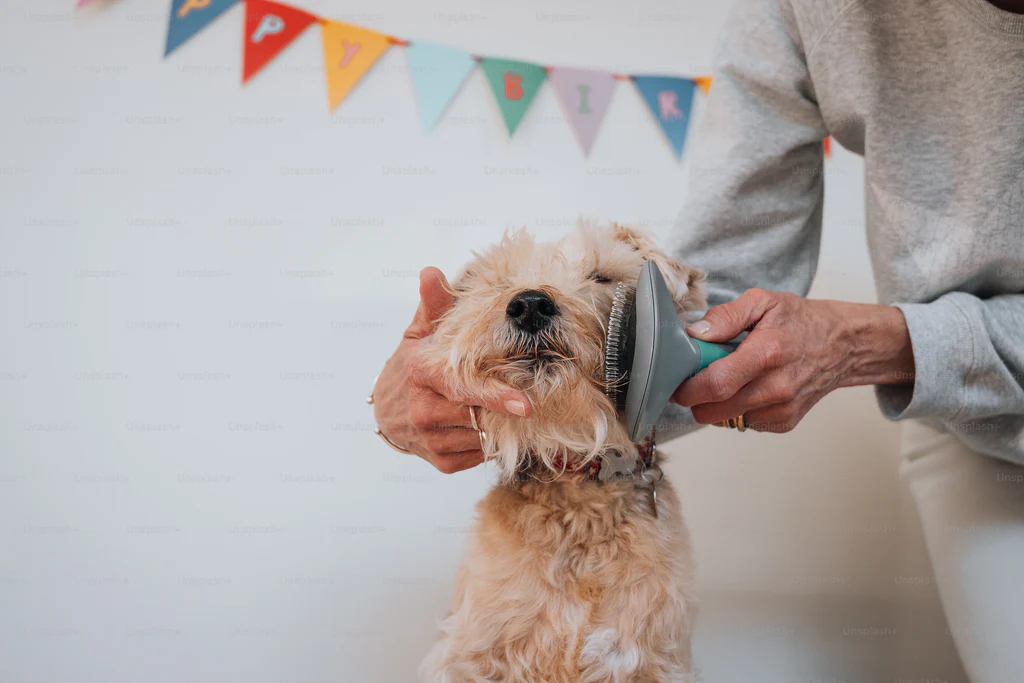
Grooming isn’t just a beauty routine—it’s essential maintenance.
- Brushing removes loose hairs and prevents tangles before they tighten.
- Slicker brushes and steel combs reach deep into thick or layered coats.
- Bathing with conditioner softens the coat and reduces friction.
- Thorough drying after bathing or rain prevents damp fur from matting as it dries.
- Trimming friction areas like under the collar can minimise mat formation.
Routine grooming is like brushing your teeth—you don’t wait for cavities. You prevent them.
Breed-Specific Grooming Needs (With Focus on Long-Haired Dogs)
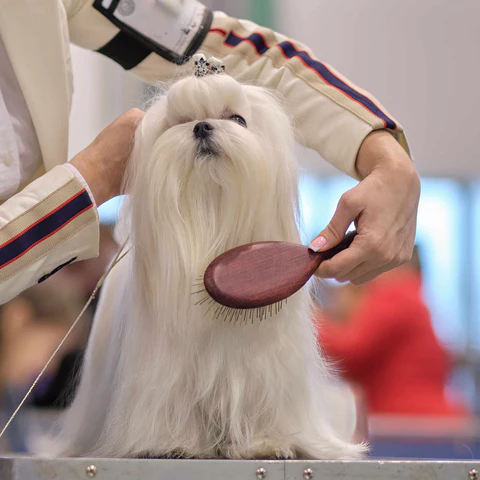
Each breed has its own coat type—and its own grooming challenges.
- Shih Tzus
- Daily brushing required
- Use of coat oil or leave-in conditioner
- Watch for tangles on legs and tail
- Daily brushing required
- Golden Retrievers
- Weekly undercoat raking
- Seasonal shedding tools
- Focus on thighs, behind ears, and chest
- Weekly undercoat raking
- Afghan Hounds
- High-maintenance show coats
- Daily brushing and weekly baths
- Long drying times needed
- High-maintenance show coats
- Cocker Spaniels
- Ears are extremely mat-prone
- Regular trimming around feet and ears
- Professional grooming every 4–6 weeks
- Ears are extremely mat-prone
Tailor grooming routines based on the breed’s coat type and activity level.
Signs Your Dog Is Developing Mats (And How to Catch It Early)
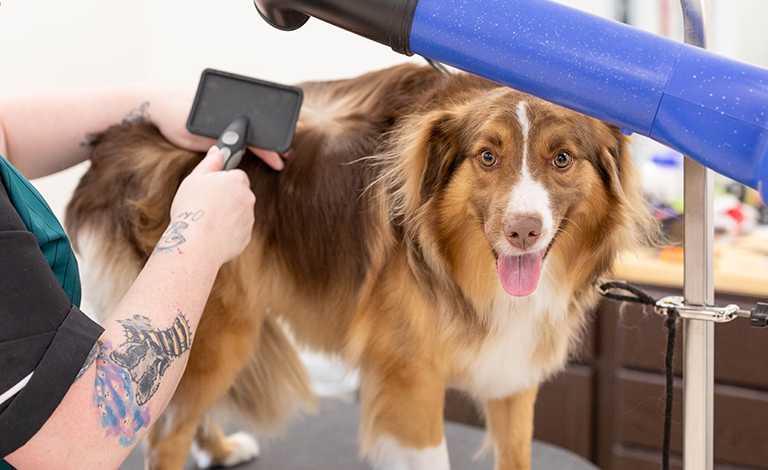
Spotting mats early can save your dog from discomfort—and save you from expensive dematting sessions.
- Small clumps of hair that feel tight or bumpy
- Rough patches on otherwise soft fur
- Dog chewing, scratching, or licking a certain area more than usual
- Sensitivity when touched in common mat zones
- Changes in posture or movement, especially reluctance to walk or jump
Run your fingers through their coat regularly. If you feel something you can’t easily comb through, it’s time to act.
Professional Grooming vs At-Home Grooming for Matting Prevention
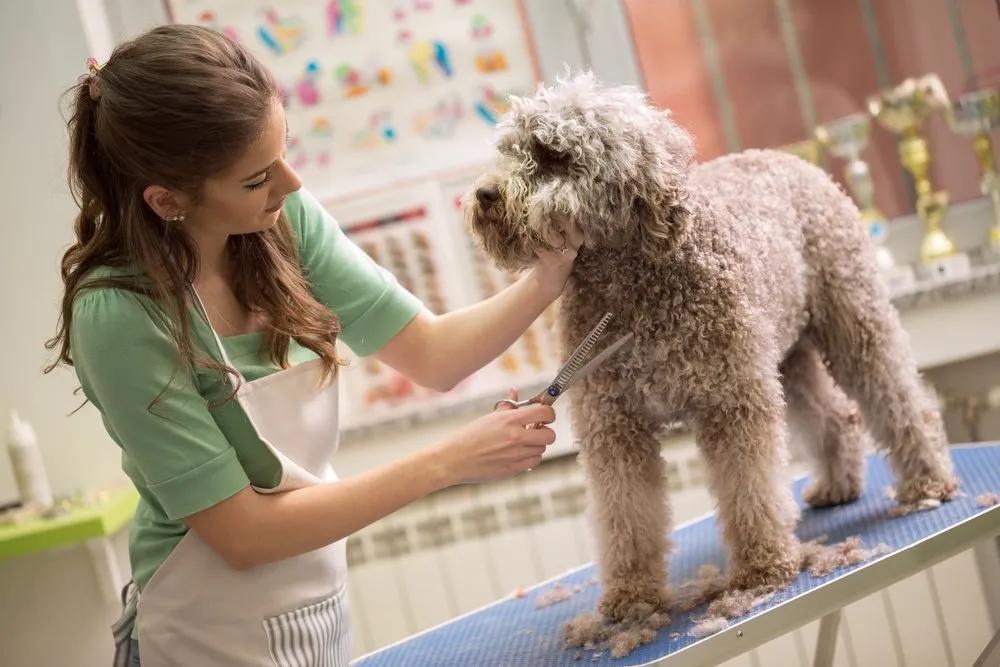
Both methods have value—it depends on your time, skill, and your dog’s coat.
At-Home Grooming
- Pros:
- Daily maintenance is easier
- Great for bonding
- Cost-effective long-term
- Daily maintenance is easier
- Cons:
- Requires commitment and tools
- May miss deeper mats
- Requires commitment and tools
Professional Grooming
- Pros:
- Deep coat cleaning
- Trained in safe dematting
- Can style by breed standard
- Deep coat cleaning
- Cons:
- More costly
- Gaps between appointments can allow mats to form
- More costly
Careers Collectiv recommends a hybrid model: daily at-home brushing plus professional grooming every 4–8 weeks.
Best Grooming Tools and Products to Prevent Matting
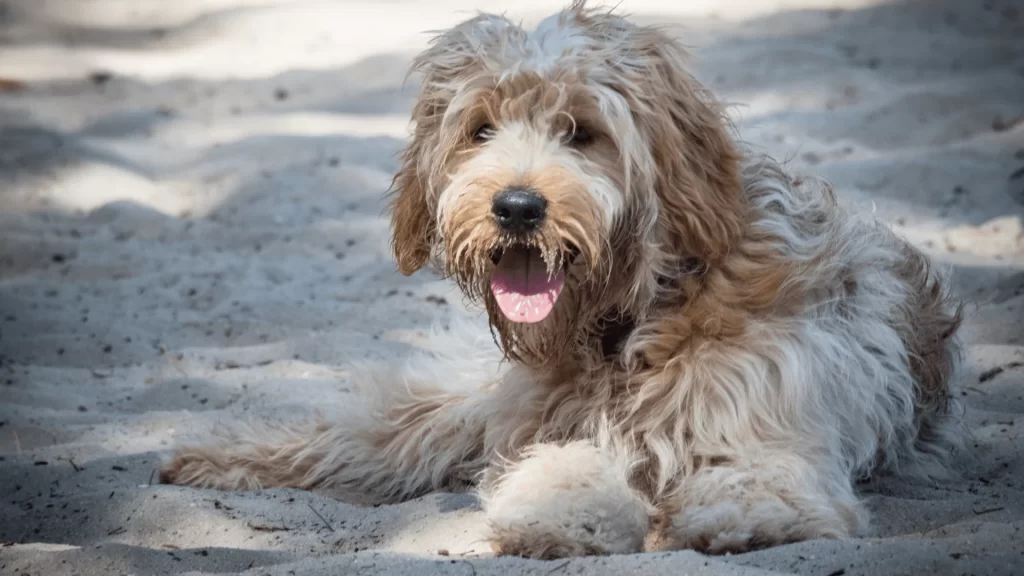
The right tools matter as much as the routine itself.
For Double Coats (e.g., Huskies, Golden Retrievers)
- Undercoat rake
- Slicker brush
- Deshedding shampoo
For Silky Coats (e.g., Yorkies, Shih Tzus)
- Pin brush
- Detangling comb
- Leave-in spray
For Curly Coats (e.g., Poodles, Doodles)
- Metal comb
- Dematting rake
- Coat conditioning mist
Invest in quality tools—they’ll last longer and make grooming easier.
How Often Should You Groom a Long-Haired Dog?
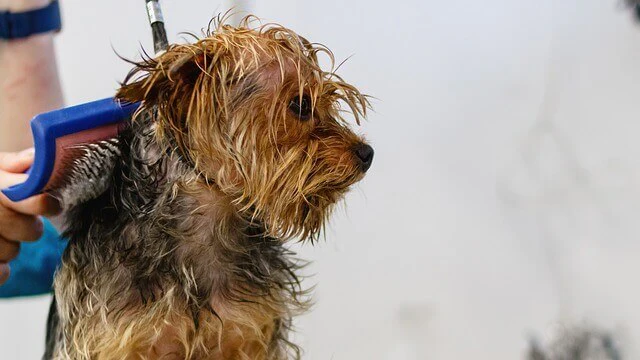
Consistency is key. Don’t wait for mats to appear.
Brushing Frequency:
- Daily for curly or fine-haired breeds
- Every other day for double-coated dogs
- After outdoor play or swimming
Bathing Schedule:
- Every 4–6 weeks depending on activity
- Always follow with a full dry
Professional Grooming:
- Every 4–8 weeks
- Schedule more often during heavy shedding seasons
Each dog is different—observe their coat and adjust accordingly.
What Happens If Matting Goes Untreated?
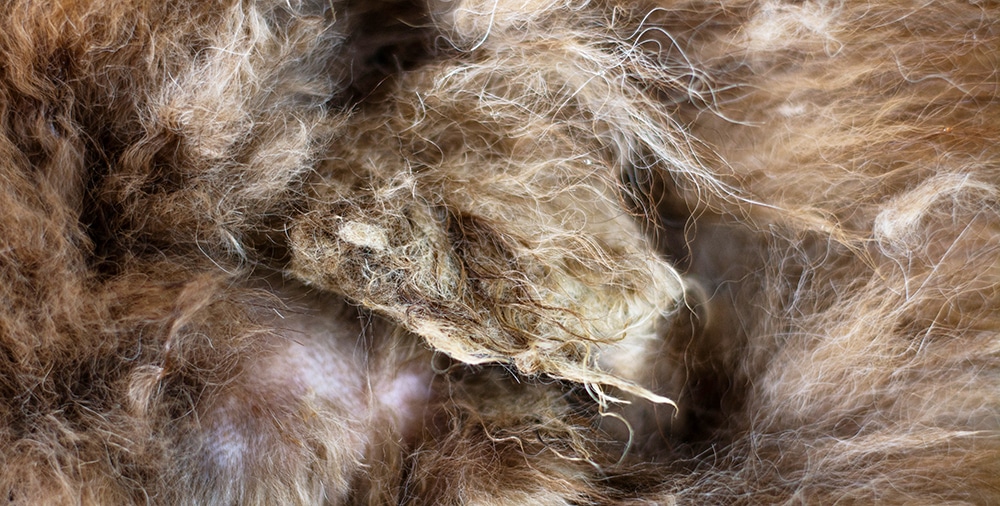
Letting mats grow unchecked leads to real consequences.
- Skin infections – trapped moisture and dirt create bacteria build-up
- Hot spots and wounds – mats tear the skin when the dog moves
- Pain and inflammation – imagine wearing a tight ponytail 24/7
- Full-body shave-downs – may require sedation if the dog is in distress
- Increased vet bills – treating sores, parasites, or sedation recovery
Preventing mats is not just cheaper—it’s more humane.
Preventative Grooming Routine for Long-Haired Dogs (Checklist)
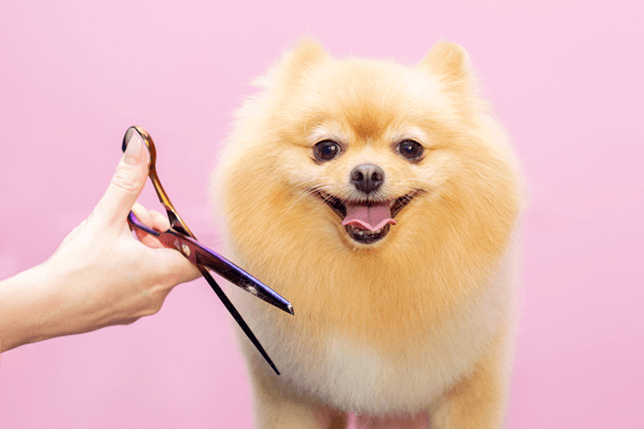
Build a system that works for your dog’s lifestyle and coat type.
Daily
- Brush high-friction zones: behind ears, under arms, tail base
- Quick comb-through of entire coat
Weekly
- Deep brush session
- Undercoat check
- Moisturise coat with leave-in spray
Monthly
- Full bath and blow dry
- Nail trim and ear cleaning
- Professional groomer visit
Seasonally
- Adjust brushing during coat changes
- Trim if needed
Stick to this and matting won’t stand a chance.
When to Seek Professional Help for Severe Matting
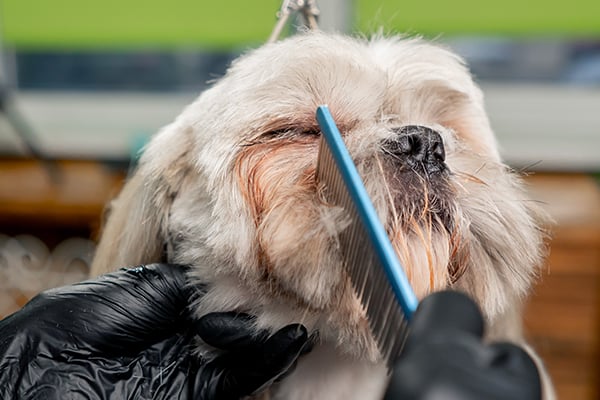
Sometimes mats go beyond DIY. Know when to call a pro.
Red Flags:
- Mats too tight to fit a comb through
- Skin irritation, swelling, or open sores
- Dog is resisting grooming or acting scared
What Groomers Do:
- Use dematting tools and sprays
- Shave matted areas if necessary
- Assess skin health and refer to vet if needed
Cost Difference:
- Regular grooming: $60–$120
- Severe dematting: $150+ plus possible vet costs
Prevention saves money, time, and stress.
Preventing Matted Dog Hair with Careers Collectiv
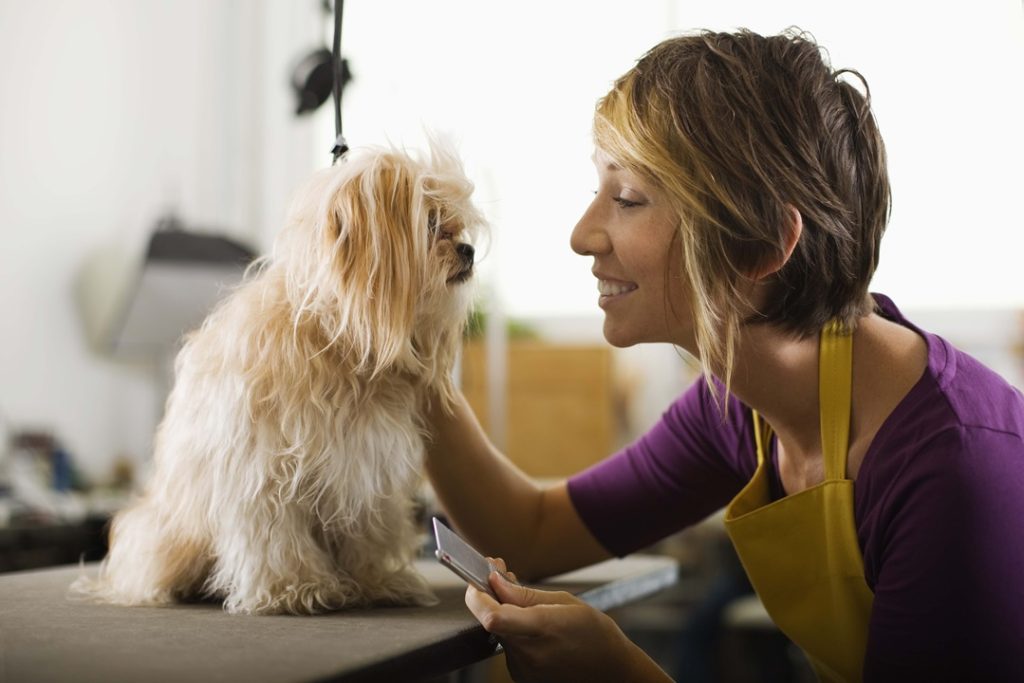
At Careers Collectiv, we educate dog owners and aspiring pet professionals with expert-level training and care insights. Matting is entirely preventable—with the right grooming, tools, and attention. Every breed has different grooming demands, but the goal is the same: keep your dog healthy, comfortable, and mat-free. Daily brushing, strategic bathing, and smart tool choices go a long way. If you’re passionate about animal care or want to take your knowledge further, it’s worth taking the time to learn animal welfare to better understand the broader health and behavioral needs of pets. It’s not about looking pretty—it’s about preserving your dog’s health, happiness, and quality of life. Prevention will always be easier (and kinder) than correction.